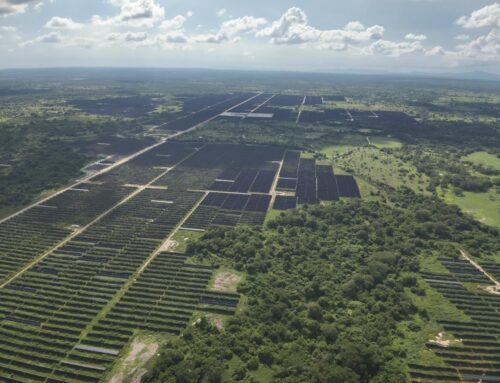Growth, Challenges in Renewable Energy Financing in Mexico
April 7, 2025
Q: How has Aspiria’s role in the renewable energy sector evolved, and what new opportunities have emerged in the financing landscape?
A: Renewable energy remains a niche market in Mexico, but it is gradually gaining public and private sector traction. Compared to the broader business financing market, valued at approximately US$80 billion annually, the commercial and industrial renewable energy financing market is significantly smaller, around US$500 million, which is nearly 160 times less in scale.
However, this sector is growing rapidly, at an estimated annual rate of 25-35%, presenting significant opportunities. Additionally, clearer government guidelines for working with CFE have provided greater regulatory certainty, making investors more comfortable with long-term commitments. While financial institutions remain cautious due to past policy shifts, increased stability is encouraging greater participation in renewable project financing.
Q: How do you see the government’s focus on state-owned companies impacting renewable project financing?
A: The availability of financing remains limited, with many players lacking deep capital reserves. In financial markets, broader participation leads to greater industry stability and increased opportunities for all stakeholders. As competition grows, businesses gain more financing options, helping drive overall market expansion.
Mexican industrial and commercial clients are also becoming more sophisticated in energy matters. They increasingly understand key concepts such as kilowatt-hour costs, power quality, leasing, and PPAs. While the market has a long way to go before reaching maturity, awareness and adoption are improving, creating a positive outlook for financing solutions.
Q: How would you assess the evolving landscape of PPAs and financing solutions in the renewable energy sector?
A: Aspiria does not engage in PPAs, as they require long-term partnerships where benefits are shared over 10-15 years. Instead, we focus on debt financing, where clients retain full ownership of their equipment once payments are completed. Many business owners prefer this model over long-term revenue-sharing agreements.
PPAs work well for large-scale or highly customized projects but face increasing competition from shorter-term financing solutions. While the PPA market will continue to evolve, financing options that allow quicker ownership will likely gain traction. Stability in the financial and regulatory environment will ultimately determine the success of both models, ensuring a competitive and efficient renewable energy market in Mexico.
Q: In previous discussions, you mentioned the challenge of securing guarantees for financing large-scale projects. Now that we have more clarity on how these projects will take shape in Mexico, what opportunities do you see? Do you believe there is enough security for investors to engage in projects with CFE?
A: There are significant opportunities. We receive many proposals, particularly from municipal and state governments, highlighting a substantial need for capital. However, working with the public sector remains a major challenge.
We are currently more focused on the private sector. If local and state governments can demonstrate long-term stability and reliability to investors, they will attract significant capital. Investors seek consistency; if the rules remain stable, financing for public-sector energy projects could grow considerably.
Regarding CFE, the challenge is similar. It is a fact that neither the government nor CFE has sufficient capital to meet Mexico’s infrastructure needs. The required investment for maintenance and expansion is immense. If CFE can ensure regulatory stability and financial reliability, investor confidence will follow. The situation with delayed payments at other state-owned companies, like PEMEX, has made investors cautious.
The incoming administration appears to be professional and well-structured. If it provides clear guidelines, participation in the sector could expand significantly. Ultimately, greater trust in these entities will reduce the need for guarantees, as confidence will replace the need for extensive financial safeguards. In the private sector, for example, we currently finance up to MX$1.5 million without guarantees, and up to 0.5MW with guarantees, reflecting our growing confidence in the market.
Q: With the recent changes in US standards, do you believe ESG will remain a key differentiator for businesses?
A: In the medium and long term, yes. There is genuine interest in these issues. In the short term, however, ESG has been overused to the point of losing meaning, making the industry somewhat cynical. Many companies have labeled everything as ESG, diluting its impact.
A backlash is currently underway, distancing businesses from the term. However, the core principles, environmental responsibility, social impact, and strong governance, are essential. They will persist, likely under a rebranded name. The underlying issues remain, and businesses will ultimately realign with these priorities once the hype fades.
Q: What are the key energy market trends for Mexico in 2025?
A: One major trend will be the growing demand for photovoltaic solutions across commercial, industrial, and residential sectors. While solar has been around for years, adoption is accelerating, moving from niche to mainstream. This shift is inevitable, driven by increasing awareness and economic viability.
Additionally, larger-scale energy projects involving government and state-owned enterprises will gain prominence. These initiatives, previously more sector-specific, will become more visible in broader industry discussions.
Looking beyond 2025, battery storage will likely be the defining trend in 2026 and 2027. While it is not yet the industry’s focus, its impact is on the horizon.
Q: What are Aspiria’s objectives for 2025?
A: Our goal is to finance more solar installations for commercial and industrial clients, positioning ourselves as the leading provider of solar project financing in Mexico. If I had to define success for 2025, it would be becoming a key player in renewable energy financing and a recognized industry reference.
Search
RECENT PRESS RELEASES
Related Post



